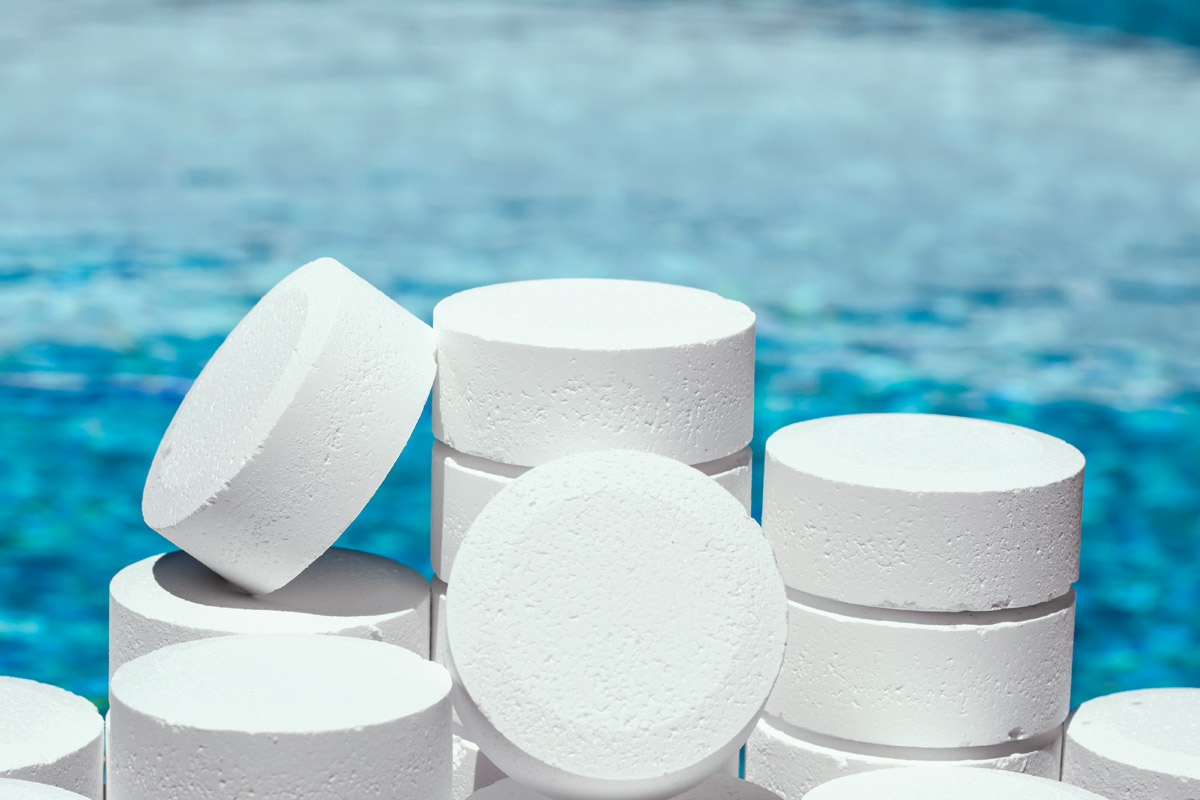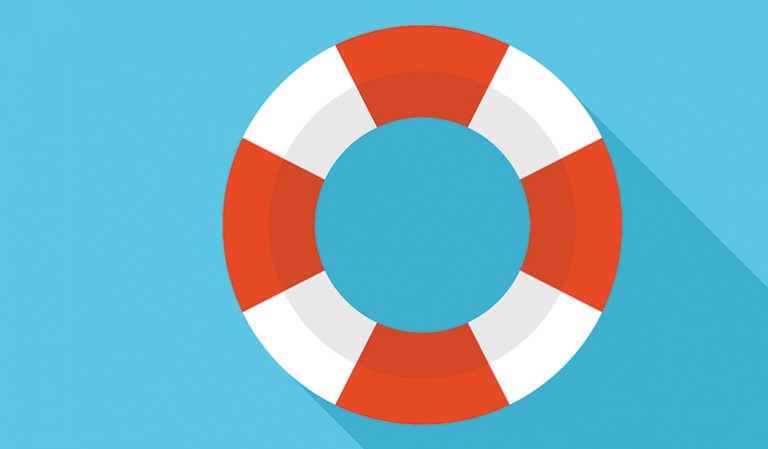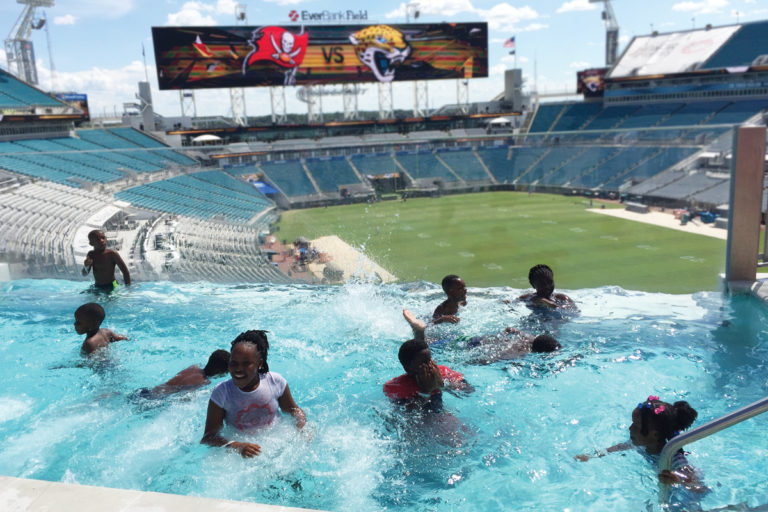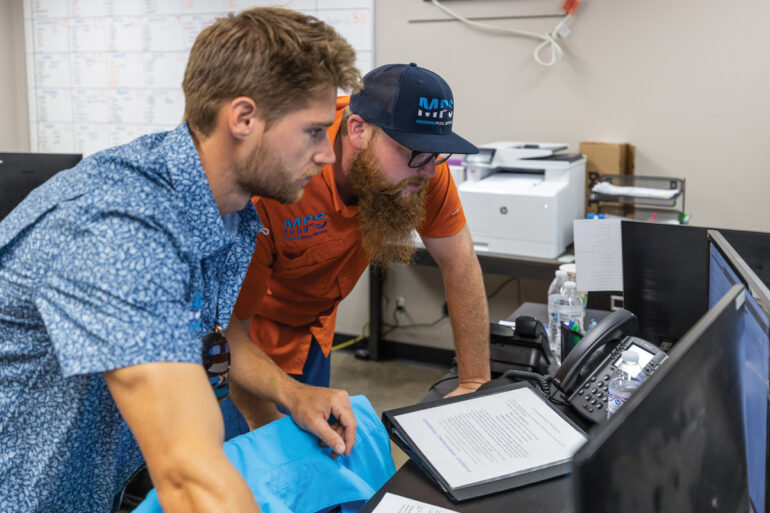A Balancing Act

Pool service pros are on the front line of the industry. They’re the customer-facing techs who deal with the challenges of creating and maintaining crystal clear, algae-free swimming pools — and at a good price.
To achieve this, they rely on chlorine to sanitize the water and keep it safe for swimmers. Proper water chemistry also involves maintaining a balanced pH (ideally between 7.2 and 7.6) through the use of additional chemicals, ensuring a comfortable swimming environment and protecting pool equipment.
Over decades, chlorine has evolved from a liquid application to include tablets, granules and powder options. It’s important to note that “liquid chlorine is a misnomer,” says Terry Arko, product education manager for HASA Pool, headquartered in Saugus, California. “We use that [term] in the industry, but if you had something that was pure liquid chlorine, it would be pretty toxic.”
Each type of chlorine has pros and cons, ranging from basic properties to newer options that reduce chlorine use. Below are the available options, their benefits and drawbacks and other aspects to consider.
Chlorine’s role: Let’s get technical
Chlorine is a naturally occurring chemical element produced from ordinary salt. While in the water, it forms a weak acid called hypochlorous acid, which kills bacteria and germs that cause viruses and keeps them from spreading. With a healthy pH level, chlorine is the first line of defense for swimmer health.
Types of chlorine and how they work
- Liquid chlorine (sodium hypochlorite): Liquid chlorine commonly comes in gallon plastic jugs. You pour it manually and slowly in front of the return jet at the deep end of the pool while the pump is running. It also can be used with a positive displacement feeder. “Liquid chlorine is going to give you the chlorine you need, and the byproduct left behind is simply sodium chloride, which is basically salt,” Arko says.
- Cal-hypo (calcium hypochlorite): A widely used format, cal-hypo is a calcium-based, granulated version that comes in bags or tubs for maintenance or pool shock. It should be predissolved before being added around the pool’s perimeter while the pump is running. It’s also available in tablet form.
- Trichlor tablets (trichloroisocyanuric acid): Trichlor usually comes in 3-inch tablets that slowly dissolve in the pool but can also exist as very fine powder and granules.
- Dichlor (sodium dichloro-s-triazinetrione): This is similar to, but not as strong as, trichlor (the two should never be used together). Sold in granular forms, it is completely soluble and is typically applied by putting the product directly in water.
- Mineral and chlorine combination: Some systems use a combination of minerals and low-level chlorine for pool sanitization. These systems typically involve prefilled cartridges that are distributed via a chemical feeder or floater device. The mineral content, often silver, works alongside chlorine to help keep water clean and balanced.
The pros and cons
Each format has proven benefits and drawbacks.
Take liquid chlorine, for instance, with a history dating back to the 1700s. It’s one of the most cost-effective forms of chlorine on the market, and once it’s in the customer’s backyard, it’s easy to use: just pour it in front of the pool’s jets and let it circulate.
“The big benefit to being liquid is that it’s liquid,” Arko says. “It doesn’t have to dissolve; you get instantaneous chlorination. You don’t have to wait for something to erode or break down, which makes it a very good shock product as well.” Liquid chlorine does not contain any stabilizer or conditioner, making it safe for all pool types, he says.
Cal-hypo is easy to carry, affordable, easier to measure than liquid chlorine and has a long shelf life. It works over a few hours or days and is a powerful shock treatment. Cal-hypo contains calcium and will raise a pool’s calcium level, says David Guy, former head of engineering for King Technology and now a consultant, and “you may need to use a brush to disperse any grains that may not have completely dissolved on the bottom of the pool to prevent staining.”
Known for its effectiveness in keeping algae out of the pool, trichlor is a strong sanitizer and shock option. The tablets are slow dissolving, typically releasing chlorine over a week. Trichlor’s powder form is fast-acting, as is the granular. The conditioner in the granular can cause brown stains on the pool’s plaster and is not recommended for vinyl, fiberglass or colored plaster pools.
Dichlor is not as strong as trichlor, nor is it as cheap as liquid chlorine. Its appeal for pool pros is its long shelf life and effective pH maintenance capability. It does not contain calcium or contribute to scaling and is suitable for use in pools and spas with hard water.
An EPA-registerer mineral sanitizer and chlorine cartridge system allows users to avoid direct contact with chlorine tablets since the cartridges are placed inside a chemical feed system. This setup is premeasured and easy to use, reducing chlorine usage, which appeals to pool owners concerned about chlorine’s smell, fading of swim suits or the harsh feeling on your skin, says Alex Granlund, senior product marketing manager for King Technology. The minerals last for six months and help condition the water, making it feel softer on the skin.
Storage, handling and safety considerations
Pool service pros face many challenges when storing and handling chlorine, no matter the format. “This includes the fact that they are responsible for the safe handling for all of the products they are using, not just their chlorinating products,” says Brian Trenck, manager of technical services for parent company BioLab in Lawrenceville, Georgia. There are also specific transportation regulations at the federal and state levels as well as potential local regulations within a county or municipality.
Each type of chlorine comes with unique safety and storage considerations. Cal-hypo is a powerful oxidizer and a significant fire hazard if not stored properly. It must be kept in a cool, dry and well-ventilated area, away from organic materials, acids and any potential sources of ignition. Improperly storing cal-hypo near combustible materials can lead to dangerous reactions, including fires or explosions. Additionally, it should never be mixed with other chlorine types, as this can create hazardous gases.
Trichlor and dichlor are stabilized chlorines, meaning they contain cyanuric acid to help protect chlorine from sunlight degradation. However, trichlor is highly acidic and can cause corrosion if not stored properly. It should be kept in a dry place, away from incompatible chemicals, particularly cal-hypo, as mixing the two can cause violent reactions. Dichlor, while more pH-neutral, should still be handled with care, ensuring it remains dry and separate from other pool chemicals.
Mineral and chlorine combination systems often use prefilled cartridges, reducing direct handling of chlorine. However, service pros should still follow proper storage guidelines, ensuring these products are kept dry and away from incompatible chemicals.
While liquid chlorine is nonflammable and noncombustible, it is — because it’s salt — corrosive, so the product needs to be stored in a facility with good ventilation, Arko says. Care should be taken during transport for any leakage, which HASA obviates by providing the familiar yellow, secondary containment for its gallon containers.
Regardless of the chlorine type, pool pros should always use protective gear such as gloves and goggles when handling chemicals and ensure all products are stored according to the manufacturer’s guidelines to minimize risks.
Making the right choice
When determining the right sanitizing product and water treatment system for their customers, pool service pros should consider factors such as pool type, customer preferences, cost, hardness of the local water and environmental influences. When questions arise about individual situations, Trenck says it’s a good idea to contact the product manufacturer to get the best possible results for customers and the business.
General Rules for Safely Storing and Handling Pool Chemicals
Sometimes rules are just common sense; sometimes they’re crucial guidelines for the safety of pool service professionals and others. Brian Trenck, manager of technical services for BioGuard, offers a list of must-knows to keep in mind.
- Carry a safety data sheet for all chemicals.
- Try to store chemicals away from direct sunlight in a cool, dark place. All products will contain a section on their label that provides proper storage and handling guidelines.
- Separate oxidizers (dichlor and trichlor) from cal-hypo and liquid chlorine. If possible, use inert materials such as hoses, sand or D.E. filter media to create a barrier separating products.
- Separate muriatic acid from everything, including salt.
- If storing or transporting products vertically on shelves or racks, never store liquids above solids.
- Automotive liquids like gasoline, diesel, brake fluid, motor oil, etc., should not be transported with pool chemicals.
- Respond to pool chemical spills immediately and never put spilled chemicals back in the original container (they might be contaminated with substances such as dirt or grease).
- Use separate, dedicated materials, including clean, dry brooms, shovels and containers, to clean up and appropriately dispose of each spilled chemical; refer to the safety data sheet for appropriate absorbents for liquid spills.
- Do not store chemicals on your vehicle for long periods; unload and use them or store them in an appropriate storage area.
- Follow all pertinent Department of Transportation regulations for the placarding of hazardous materials for transport. Exemptions may be available based on the total amount of hazardous materials they carry.





